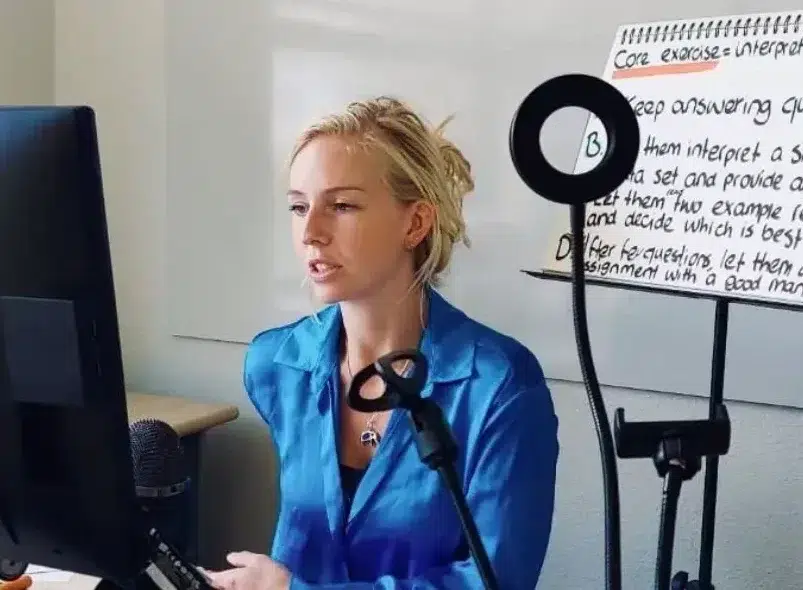Aren’t multiple choice questions boring?
You can actually use them to motivate your students (if you do it right).
One of the learnings in the iCRA ‘Making Education Work’ course: How to motivate your students straight from the start of a session?
When you are a teacher it is a nightmare when students are not motivated. You are explaining important parts of your theory, yet they seem bored and sometimes even start doing other things like checking their phones…
In today’s online training our participants of the #MakingEducationWork course focused on how to motivate students at the start of their sessions. They learned by experiencing a reflective start and then designed one for their own topics.
How does this reflective start work?
In this session we make use of a multiple choice question. We sketch a difficult situation that a student might find themselves in in their future jobs once they have graduated. You ask them how they would approach the difficult situation and show them 3 or 4 different answers that all are possible, but one of them is the very best option. Let them pick an answer and discuss amongst themselves.
For example, in a session on ‘interviewing customers’ in a course on entrepreneurship, you might say:
‘Imagine that you want to know whether your customers are satisfied with your services. What do you do to get that information on the table?’
- A. By sending out surveys to all your customers to get a lot of data.
- B. By interviewing them individually and listen to what they have to say, even if you have to let go of your questions.
- C. By interviewing as many as you can individually and going through a set of standardised questions.
This question is not to test your students’ knowledge but aims to put them in the shoes of their future selves and challenges they might face once they have graduated. They reflect on the possibilities and what they would opt to do. Only at the end of the discussion the teacher comes in and explains what would be the best option and why.
Why does this work?
Many students already know that they are not yet experts on the topic. And that you are. But often they don’t really see yet what is in it for them to be learning about this topic (except for passing your course). It is far away from what they care about right now (such as the apps on their phones). By using a real-life situation students will become aware of the relevance of the topic. It comes alive for them and during the discussion amongst themselves they become curious about the opinion of the teacher, who has not given any input. They start looking at you and think; ‘But teacher, what do YOU think is the right answer?’ And that is an easy bridge to the theory of your topic! You can kick the ball right in the goal.
Designing is not enough to lead to success
After these online training sessions on designing an effective lesson the participants of our Making Education Work course will come to the Netherlands in November and improve their delivery skills. They will learn how to best facilitate a discussion, deal with difficult situations in the classroom, how to give a powerful explanation and more. During this week they will also visit several Dutch agricultural educational institutes to exchange learnings on how to organise internships and linking learning to the labour market. At the end of the f2f week, they will put everything in practice and provide a mini-training.

Written by
Mirte Van Os
Read more iCRA Expert bites & Expert talks
